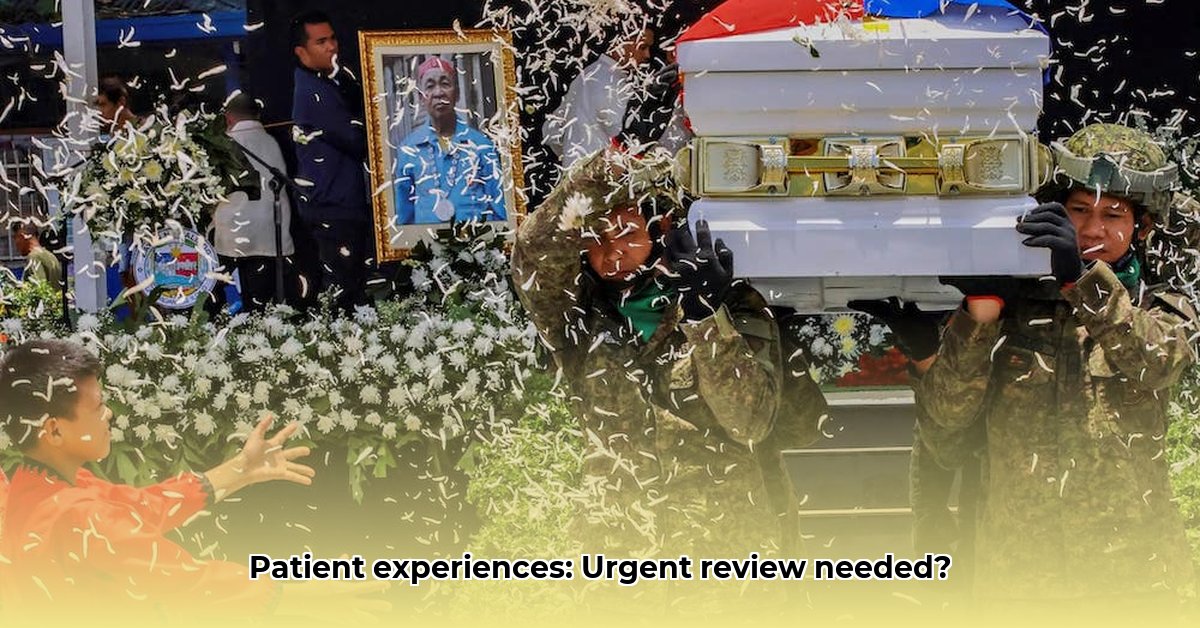
This report analyzes the professional profile of Dr. Federico Ng, MD, examining patient experiences, practice operations, and potential legal and ethical ramifications. Our objective is to provide a balanced assessment, identify areas for improvement, and offer actionable recommendations for mitigating risks. For further information on best practices, see this resource.
Dr. Federico Ng's Professional Background
Dr. Ng holds a medical degree from UT Southwestern Medical School and completed a residency at the University of Texas Medical Center. He also possesses a law degree from St. Mary's University. This unique combination of medical and legal expertise suggests a strong foundation for ethical and competent medical practice. However, recent patient experiences and operational observations necessitate a closer examination of his practice's effectiveness and adherence to professional standards.
Patient Experiences: A Divergent Narrative
Patient feedback regarding Dr. Ng's practice reveals a significant disparity. While some patients express high satisfaction with his medical expertise and attentiveness, others report substantial concerns. Recurring complaints emphasize excessively long wait times, often exceeding one hour. More seriously, allegations of unprofessional conduct, including inappropriate questioning and physical suggestions, have emerged. These contrasting narratives necessitate a thorough investigation to determine the root causes and potential consequences. Is there a systemic issue causing these discrepancies, or are individual patient perceptions not reflective of the overall quality of care?
Operational Analysis: Identifying Bottlenecks and Inefficiencies
Several operational challenges may contribute to the reported negative patient experiences. Inconsistencies in the walk-in appointment system and a high rate of staff turnover indicate potential organizational weaknesses. This high staff turnover raises concerns about training continuity and the maintenance of consistent patient care standards. Furthermore, it may suggest underlying problems with practice management and overall staff morale, which could exacerbate patient wait times and negatively affect the overall patient experience. Could improved staffing strategies and management practices alleviate these issues?
Ethical and Legal Ramifications: A Careful Assessment
The allegations of unprofessional conduct warrant a careful assessment of their ethical and legal implications. Such allegations carry significant potential consequences for Dr. Ng's professional reputation and licensure. The severity of these claims necessitates a thorough investigation to protect both Dr. Ng and his patients. Given Dr. Ng's legal background, one might expect a heightened awareness of professional boundaries; however, the conflicting patient experiences raise significant concerns. What steps are necessary to ensure patient safety and maintain professional standards?
Actionable Recommendations: A Multi-Faceted Approach
The following recommendations are categorized by stakeholder and timeline to address the identified concerns effectively.
Table 1: Actionable Recommendations
| Stakeholder | Short-Term Actions (0-1 Year) | Long-Term Actions (3-5 Years) |
|---|---|---|
| Dr. Ng | Address patient concerns directly; implement strategies to reduce wait times; conduct a thorough investigation into unprofessional conduct allegations; establish clear professional boundaries. | Engage a practice management consultant; participate in professional development programs; regularly review and update practice procedures. |
| Practice Staff | Standardize appointment scheduling; provide training on patient communication; implement robust training on patient interaction and ethical conduct; improve staff retention strategies. | Implement a comprehensive quality control system; establish patient satisfaction metrics; foster a culture of accountability and professional development. |
| Regulatory Bodies | Monitor complaints closely; conduct a thorough investigation of unprofessional conduct allegations; ensure compliance with all professional standards. | Enhance oversight mechanisms; develop more detailed guidelines for patient interactions and ethical conduct. |
Risk Assessment: Mitigating Potential Harm
The following matrix outlines potential risks, their likelihood, impact, and recommended mitigation strategies.
Table 2: Risk Assessment Matrix
| Risk Category | Likelihood | Impact | Mitigation Strategy |
|---|---|---|---|
| Patient Complaints | High | High | Improved efficiency; transparent communication regarding complaint resolution; improved appointment scheduling systems. |
| Legal Action | Medium | Very High | Thorough investigation; legal counsel; proactive communication and cooperation with regulatory bodies; detailed documentation. |
| Reputational Damage | High | High | Open communication; honesty in addressing concerns; demonstrated commitment to improvement; positive community engagement. |
| Staff Turnover | High | Medium | Improved working conditions; increased staff compensation and benefits; investment in employee training and development. |
Conclusion: A Path Forward
Addressing the issues raised in this report requires immediate and sustained action. By implementing the recommended changes, Dr. Ng can improve patient care, mitigate legal risks, and restore public confidence in his practice. Continuous monitoring and evaluation are crucial to ensure long-term success and positive outcomes. The cooperation of all stakeholders is vital to effect the necessary improvements and prevent future occurrences of similar nature.